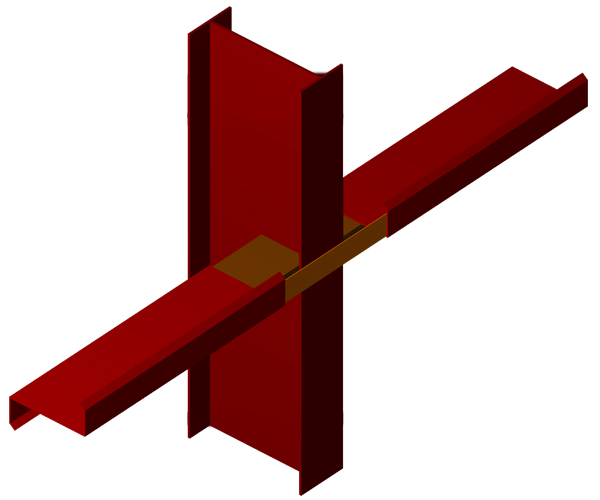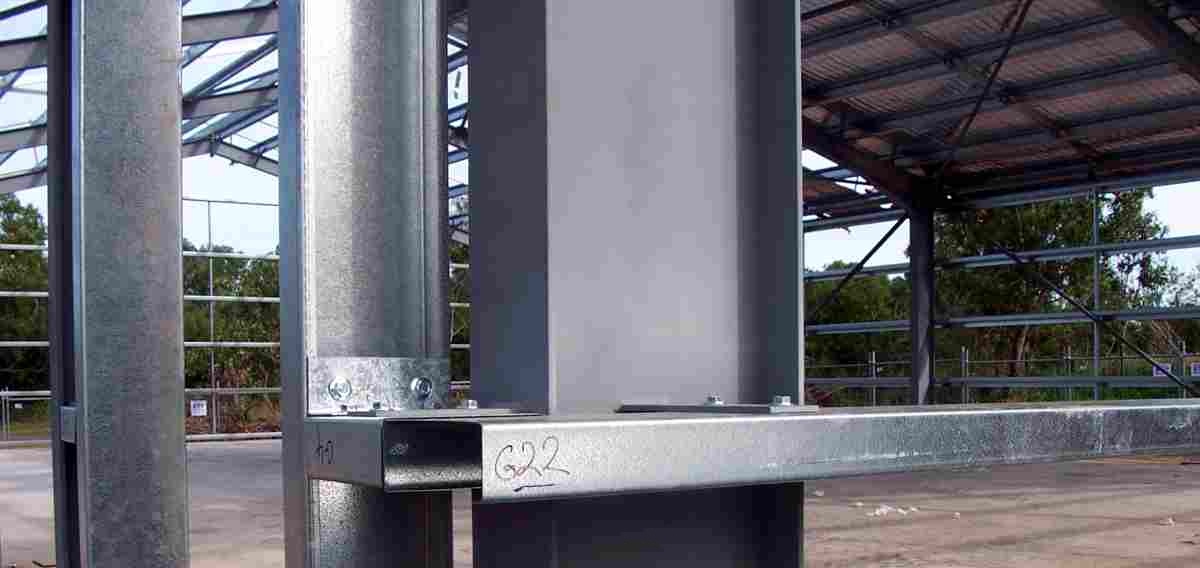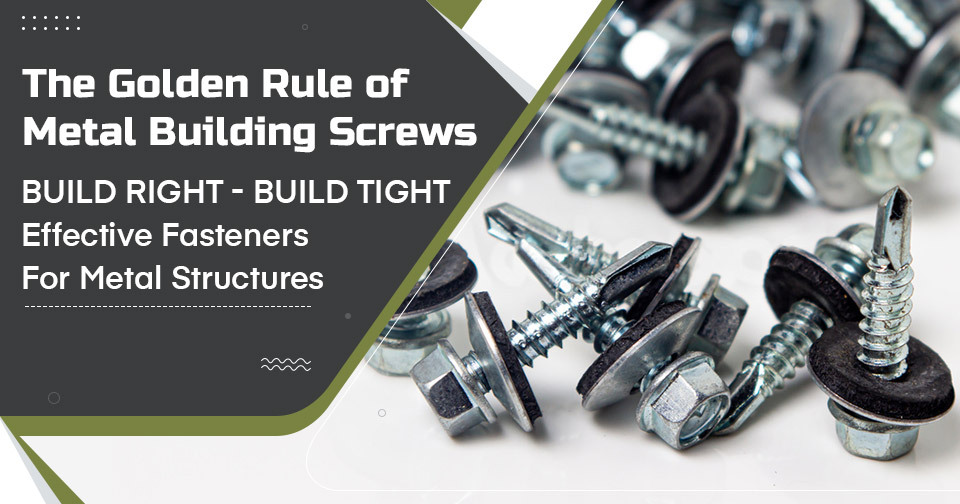Fasteners & Your Metal Building
Your steel building is only as strong as its metal building fasteners, and your fasteners are only effective when the rest of your metal building is well-made, too! Both metal buildings and secure fasteners really go hand-in-hand, but sometimes choosing the right fastener can be tricky. You want fasteners that avoid corrosion and hold your structure together successfully but also don’t stick out like a sore thumb.
There are two main fastener types: self-tapping and self-drilling. Your needs really depend on your specific building. At Metal Garage Central, we want to help you choose the best option, so we’re sharing some tips and tricks for finding the right fastener to keep your building strong and secure.
What to Know Before You Decide
Several factors affect what kind of metal building fastener you need. There are four main factors to consider—panel gauge, girt gauge, girt spacing, and wind loading. Fastener-specific features need to be considered, as well. Keep reading to learn more!
1. The Panel Gauge
The specific gauge of your prefab metal building paneling should help to determine the necessary size of your fasteners. Choosing the correct diameter ensures that your panels will be securely held together. You really don’t want to go too large or too small either, as incorrect fastener size could hamper performance, and even potentially jeopardize building your materials warranty.

2. The Girt Gauge
Girt gauge plays a significant role in fastener determination, too. Certain fasteners are designed to pierce materials ½ inch thick or less. If these fasteners were used on materials thicker than ½ inch, it could strip the fasteners. Needless to say, a stripped fastener can be rendered essentially useless! To save yourself time and money, ask the manufacturer which fasteners work best with your girt thickness.

3. The Girt Placement
Girt spacing is important for ensuring the security of your custom metal building panels. You need to have your girts properly spaced so that the panels don’t experience the “pull out” effect under high winds. The best way to avoid this effect is by having a properly-fastened building panel, and this also includes proper girt placement for greater structural integrity.

4. The Wind Load Engineering
You need to know how your prefab metal building paneling is designed for handling wind loads, too. Wind load basically refers to how much wind pressure the structure is built to withstand. Once you know what that pressure is, you need to choose fasteners which are designed to be able to withstand similar wind speeds and pressures. Following this procedure will help to prevent the undesirable “pull out” effect mentioned above.

So far, we’ve only mentioned factors unique to your custom metal building that may affect preferred fastener choices. However, there are factors specific to the fasteners themselves that will also help determine which types are right for you.
A. Piercing or Flexible?
Almost all fasteners are made out of carbon steel. This material is strong enough to work as a self-drilling fastener, but flexible enough to be used in buildings susceptible to continual vibration and swaying. The metal used for panel attachment is usually c1018-c1022 carbon steel, while c4037 carbon steel is the more ductile option.
B. Not Too Long, & Not Too Short
The length of your fasteners should be based on what materials you’re actually fastening together. The thicker the paneling is, the longer your fasteners will need to be. You should account for any insulation that will be placed between your paneling, too. Whichever fasteners you choose should to be able to go through the paneling and insulation, with at least three threads to spare.
C. Hex is Best, Unless…
Nine times out of ten, you’ll probably want to go with fasteners with the classic hex head shape. These fasteners provide reliably secure and stable connections. However, they do protrude from the material a bit. If you need a fastener that doesn’t protrude, you’ll want to look for what’s known as a pancake head fastener. These are often used when there is limited space in the joint area of your paneling.
D. To Coat or Not to Coat?
Coating your fasteners is what keeps them from corroding and rusting. Uncoated carbon steel is especially prone to rusting, so this is probably not your best option. There are typically three ways that fasteners can be coated: zinc coating, painting, and powder coating. We suggest zinc coating as a start, but powder coating and paint can certainly add to the protection value of your fasteners.
E. Choose Efficiency
We’ve briefly mentioned the fact that fasteners are often classified as self-drilling or self-tapping. Self-drilling fasteners are the most efficient option. They attach directly to your drill, and can be used to pierce a hole and secure themselves in the panel at the same time. Self-tapping fasteners, on the other hand, usually require you to pre-drill holes before the fasteners can be attached.
F. Rubber Isn’t Conductive
Washers don’t tend to receive a lot of fanfare, but they’re arguably one of the most important facets of your fastener system. Washers serve to help create a seal between your panel and the screw itself. If you choose the wrong kind of washer, conductive activity can take place between the two different metals, and thus increase corrosion rates. For this reason, we highly suggest rubber washers. The two most common types are neoprene and EPDM.
The Perfect Fastener
Choosing the right fastener for your custom metal building should involve all the factors listed above. Still, there are some options that are simply better than others. The best fasteners are made from strong carbon steel, are coated to prevent corrosion, and have a non-conductive washer to help prevent leaks.
While stainless steel is an option, carbon steel is probably your best bet. The primary advantage to stainless steel is the fact that it’s essentially corrosion-free. However, stainless steel is also softer, so it won’t work as a self-drilling fastener. Self-drilling fasteners are really more efficient and time-saving, so carbon steel really gets the nod here. The carbon steel fastener should be coated in at least .7 mm of zinc in order to provide the needed corrosion protection.
And as mentioned above, it’s best to plan to seal your fasteners to your metal building paneling with an appropriate washer. From our experience, the best washer to use for this purpose is an EPDM rubber washer.
Tips to Make Installation as Simple and Painless as Possible
If you’re planning on taking on the installation yourself, it’s important to make sure you have the right type of screw gun. This can help to either make – or break – your entire metal building.
There are different screw guns for wood and steel; you need the one meant for steel. An essential requirement for this type of screw gun is that it needs to be 2000 RPM. Anything less than 2000 will not successfully penetrate the steel.
Once you have the right type of screw gun, you also need to know how to use it. Here are some good tips to follow:
- Don’t apply more pressure to the gun than needed; you can end up destroying the fastener otherwise.
- Use the best drill bits; cheap ones will break.
- Don’t overtighten your washers, as this is just as bad as not tightening them enough.
- Hold your screw gun at a right angle.
By following these tips, your metal building installation should go much more smoothly!
Remember the Golden Rule: Call Metal Garage Central
While finding the right metal fastener can sometimes be tricky, finding the right metal building provider isn’t. Metal Garage Central is your one-stop-shop for all things metal buildings! When it comes to metal building fasteners, just remember to follow the golden rule: build right, and build tight. Got more questions? Looking for the right metal building provider to meet all your needs? Just give us a call at (980) 223-3072. We can help you design the perfect metal building of your dreams, and we also provide complete metal building installation services, too. We’re here to help!


